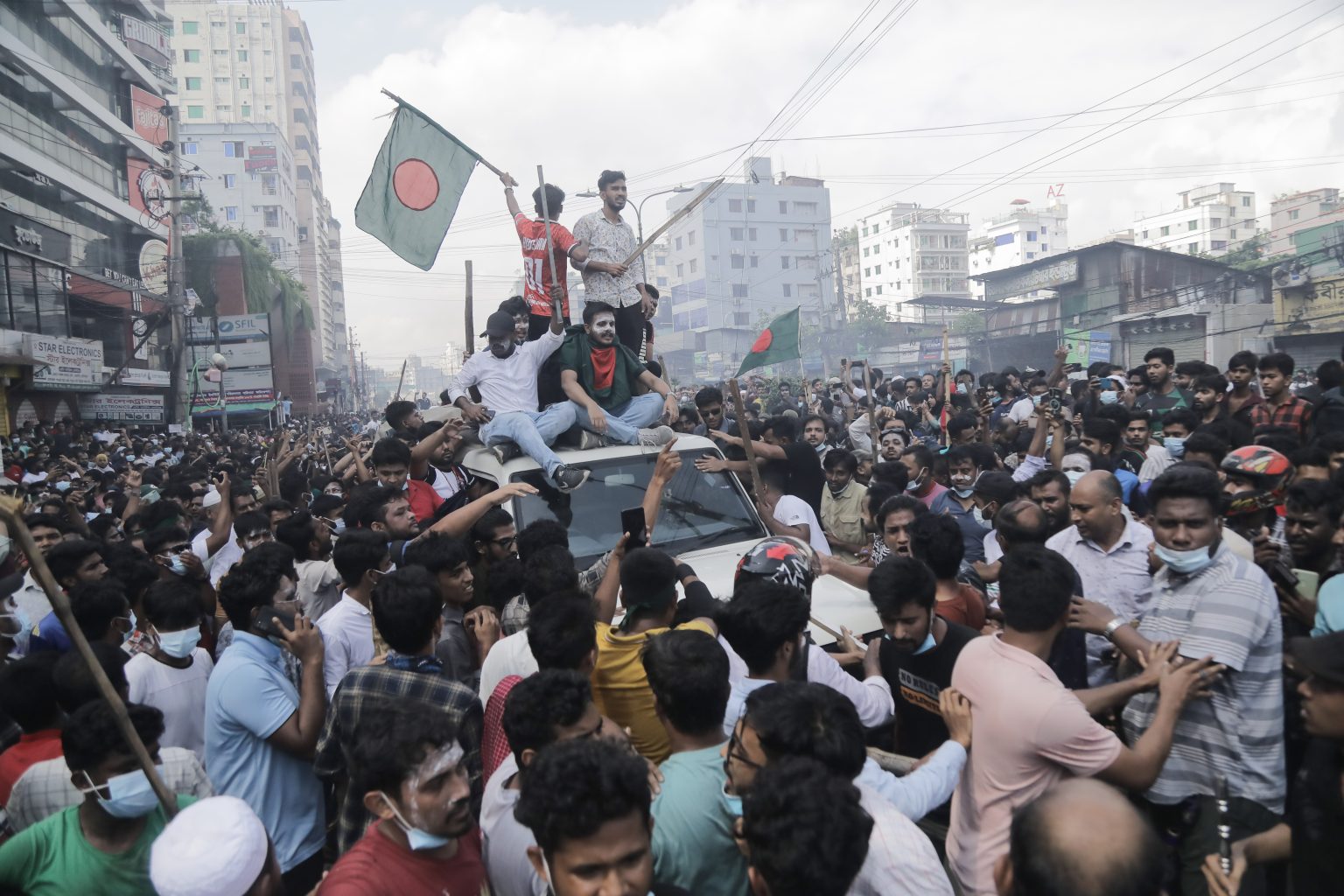Growing up in a modest 1990s government colony in Dhaka’s Dhanmondi neighbourhood, evening load-shedding wasn’t an inconvenience, it was a ritual. My sisters and I would wait eagerly for the lights to go out, knowing our father, a freedom fighter and former Swadhin Bangla Betar Kendra contributor, would use the darkness to unpack his worn bags of 1971 stories. They weren’t always tales of valour—often, they were unfiltered accounts of war’s quieter, more brutal truths.
Over time, I found myself drawn to that same raw urgency—towards conflict, political unrest, and the streets where power and resistance violently collide. As a photojournalist, covering protests became my rhythm, my profession, and my daily reckoning. But the July Uprising was different from the outset.
On the humid afternoon of 18 July, I was crouched in a narrow alleyway in Badda when a young man from BRAC University shouted to hesitant neighbours peeking from behind shutters: “Come join us and liberate us—or stay home and buy potatoes for Tk70 a kilo!”
It struck a nerve. Within minutes, people poured into the street—rickshaw-pullers, shopkeepers, women with infants slung across their backs. The police, overwhelmed, retreated behind the gates of the Canadian University of Bangladesh. What began as a student rally instantly morphed into something bigger, more volatile people’s revolt.
Weeks have passed. Through my lens, I documented lifeless bodies on pavement, makeshift ambulances, the scream of a mother inside the morgue at Dhaka Medical. I couldn’t stop thinking of my friend Amr Alfiky, the Egyptian photojournalist, and how the revolution in Tahrir Square had changed the course of his country—and his life. That felt close now. Frighteningly close.
August 4 shattered whatever boundaries were left. By afternoon, parts of Dhaka resembled the streets of Gaza or Fallujah—not just in violence, but in the atmosphere of complete state breakdown.
By 5pm, Awami League loyalists, emboldened and armed, were firing into crowds of protesters with chilling ease—like hunters targeting birds. And they did so under the protection of riot police. The air was thick with tear gas, black smoke, and fear.
Then came the call. Mahmud Zaman Ovi, a fellow photographer, rang with just four words: “Rush to DMC. Now.”
I’ve rarely put my camera down mid-assignment. But at Dhaka Medical College Hospital, I froze. Blood-soaked stretchers blocked the hallways. Volunteers screamed for saline. Wounded teenagers lay on the ground, gripping strangers’ hands in silence. For a moment, I thought I’d walked into Al-Shifa in Gaza.
The urge to help—to press a wound, to rewind time—nearly overwhelmed me. But I knew I couldn’t save anyone. What I could do, and must do, was document it. Because that’s what we do. We bear witness when others can’t. Even when it breaks your heart.
That night, during hushed calls with colleagues, a grim consensus emerged: this was no longer just a political crisis. It was the brink of civil war. Either Sheikh Hasina would flee by morning, or blood would continue to fill the streets.
Gunfire woke me the next morning. I grabbed my vest and headed straight for Badda, where I sensed the final chapter would unfold.
By the time I arrived, army personnel were urging calm.
“We don’t want to shoot you,” one officer said through a loudspeaker.
But within minutes, the calm fractured. Tear gas and rubber bullets flew. Protesters regrouped. The battle pulled through the afternoon.
Then, the news broke: Hasina had fled. General Waker confirmed it.
Ovi and I locked our eyes.
“No more young bodies,” he whispered.
It was a fragile moment of relief. But it didn’t last. We understood immediately—this wasn’t the end. It was a new chapter.
What followed wasn’t peace; it was a power vacuum. In Badda, army units stood frozen as police opened fire on a victory procession. Three bodies hit the ground. Protesters carried one of the dead and placed it on the hood of a military jeep.
“We want justice!” they cried, hoarse and furious.
It has been exactly one year. I haven’t stopped photographing conflicts since. The wound on my leg from rubber bullets and stray pellets still aches. But it’s the invisible wounds that linger. I carry them in silence, haunted by the 1,400 lives lost—and the justice that still hasn’t come.


